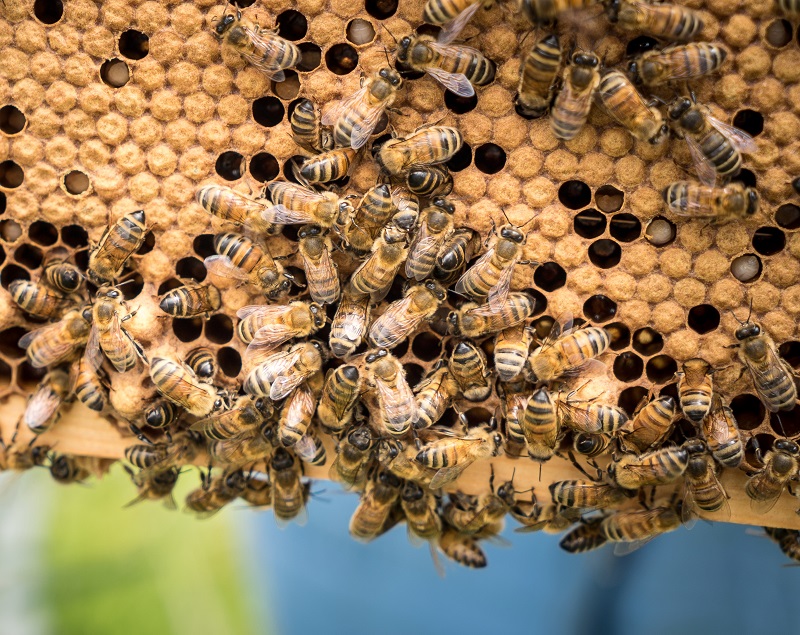There’s a lot riding on the health and productivity of Australia’s honey bees – a $100 million honey industry for starters, not to mention the $6 billion worth of crops that they pollinate. And the success of every one of Australia’s estimated 448,300 commercial hives depends on a single queen.
The regal mother of each colony is capable of producing an astounding 1,000-1,500 eggs each day throughout the spring/summer season and has the biggest bearing on that colony’s health and productivity.
But up until now we’ve known relatively little about the genetic make-up of queens and the traits they pass on to their industrious offspring. Enter Dr Rob Banks and his colleagues at the Animal Genetics and Breeding Unit, a joint venture between the University of New England and the New South Wales Department of Primary Industries (DPI), and the department’s Tocal Agricultural College.
In collaboration with honey bee experts within NSW DPI and the University of Sydney, Rob’s team is about to begin evaluating the genetics of honey bee queens in eastern Australia. The project aims is to help breeders to produce queens with superior honey production and disease resistance, amid concerns that the quality of Australian queen bees is declining.
“In the past it’s been very difficult to assess the genetics of queens because so few beekeepers maintain good pedigree records and it’s difficult to know which drones (males) the queen has mated with,” Rob said. “Beekeepers have simply assessed the queens based on the performance of the hive.
“Our modern techniques will allow us to evaluate the queens’ DNA, and work out which queens have the best genetics for things like honey production, health, temperament and foraging ability. We’re reasonably confident that the healthier, more productive bees are also better at pollination, and the economic consequences of improved pollination are enormous.”
Genetic gains in honey production are estimated to be worth up to $41 million over the next 25 years. With the backing of the Wheen Foundation, Rob and his DPI colleagues will work with commercial queen bee breeders and assess queens within 250 hives at a research apiary at the DPI’s Tocal Agricultural College.
“We will use the breeders’ pedigree information on the ancestry of the queens or extract DNA from worker bees to determine the genetic make-up of the queen and of the drones she was mated to,” Rob said. “Our DNA analysis will enable us to determine which queens have the best genes for the traits we’re interested in, so that the industry can apply more systematic breeding methods to breed better bees.”
It’s an important defence against threats like the Varroa mite, one of the biggest killers of honey bees internationally. Rob said planned collaboration with researchers in other countries, who have been selecting for Varroa mite resistance, may help his team to afford Australian honey bee populations greater protection.


